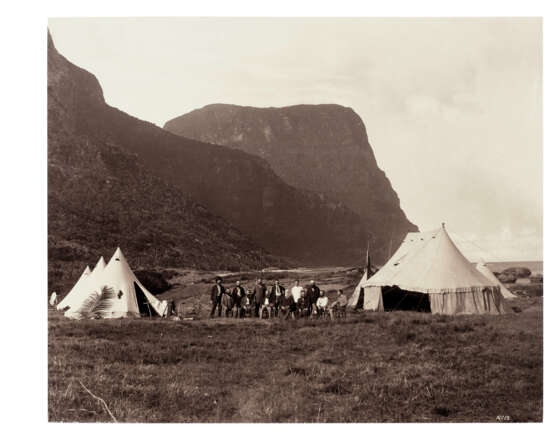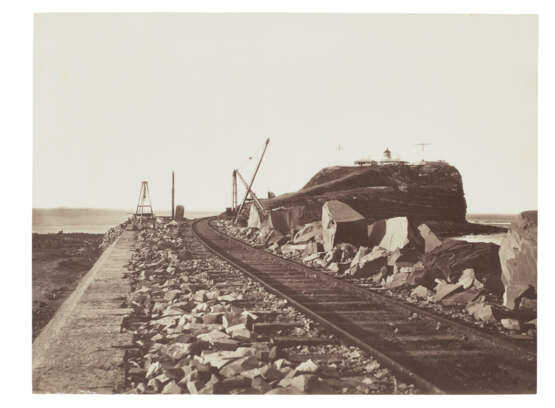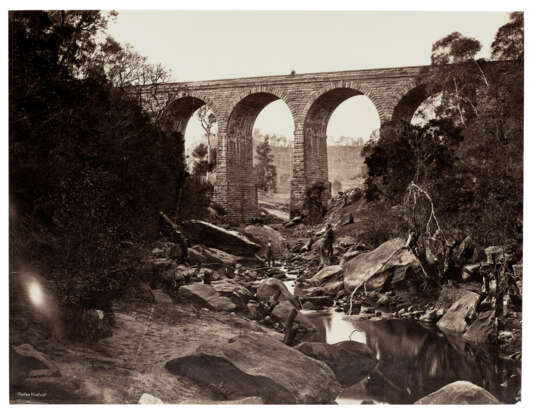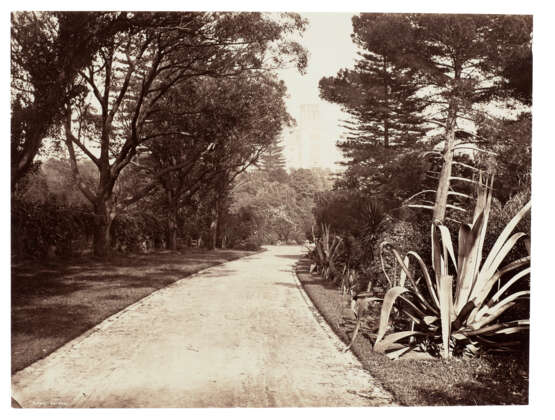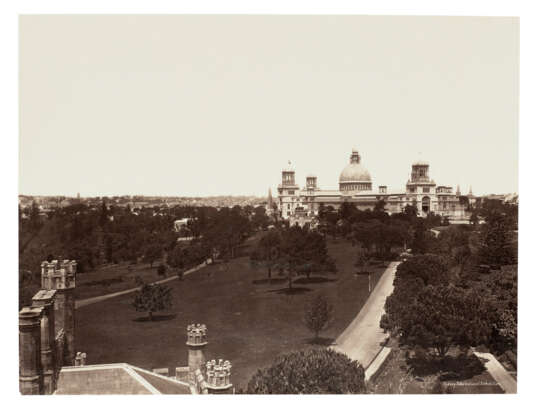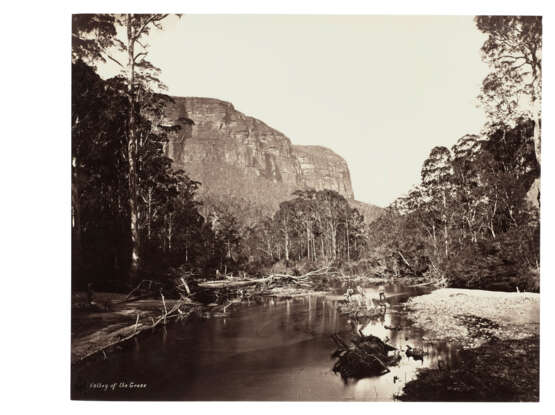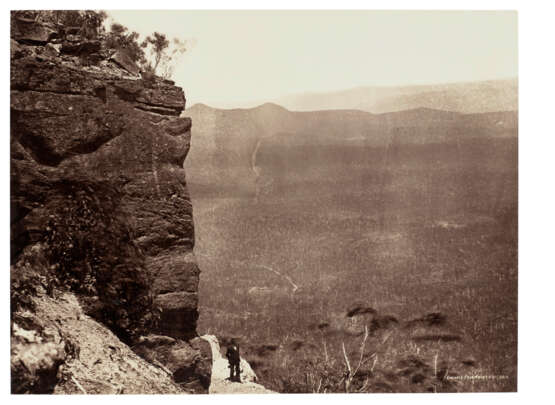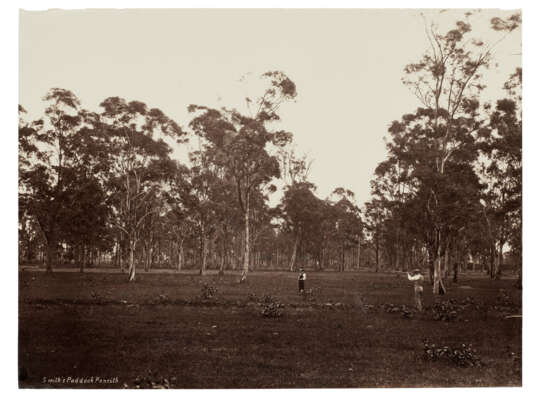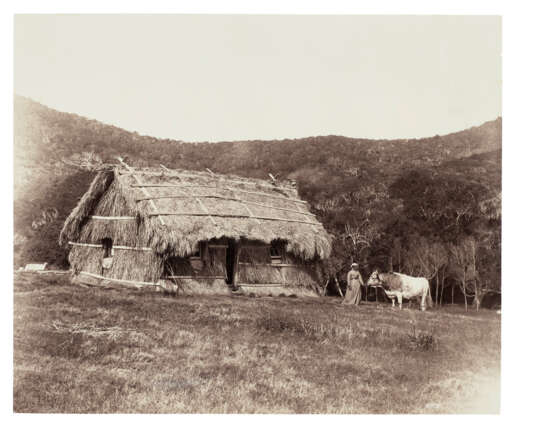ID 1105639
Lot 46 | SHARKEY, John (c. 1833-1898)
Estimate value
£ 20 000 – 30 000
A series of albumen paper photographs of various locations in New South Wales. [c. 1880s].
Extensive collection of photographs depicting both the natural splendour and the industrial development of New South Wales in the late 19th century; includes the earliest known photographs of Lord Howe Island. These images of Lord Howe Island and its inhabitants were taken by John Sharkey, the first official photographer of the New South Wales government (1869-1896). In 1882, the photographer accompanied politician John Bowie and group a of scientists to record the natural fauna and landscape of the island and the way of life of its residents. These pictures markedly contrast with Sharkey’s photographs of mainland New South Wales, in which the rapid development and modernisation of the region is captured and Sharkey documents the construction of railways, bridges and the growth of the city centre. Indeed, this impressive collection, once belonging to the Earl of Belmore, Governor General of New South Wales (1867-1872), offers a striking window into the evolving landscape of Sydney and its surrounding countryside.
66 albumen photographs (smallest: 221 x 271mm; largest: 345 x 263mm) and one panorama (629 x 269mm) organised into 10 groups. Newcastle series formed of 6 photographs, all annotated in pencil on verso (occasional light staining with some small tears and creases to edges); Lord Howe Island series comprising of 10 images, of which 9 are numbered in negative (nos. 3, 5, 6, 7, 8, 9, 11, 15, 18), all annotated on verso in pencil (light creasing and some very small tears); Katoomla series containing 4 photographs, all titled in negative (a few tiny tears); Botanic Garden series comprising of 9 photographs, all titled in negative (one photograph with small crease, otherwise in excellent condition); Landscape series comprising 11 photographs, 7 titled in negative, 3 with title annotated in pencil on verso (occasional tiny tears and creases, Smith’s Paddock Penrith with more substantial crease to top right corner); Valley of the Crose series comprising of 4 photographs, all titled in negative; Buildings and Statue series comprising of 9 photographs , 7 with title in negative, remaining two with identifying pencil annotation on verso (two photographs, titled Public Works Office and University, with minor spotting and staining, otherwise all in fine condition); Kiarna Basin series comprising of 3 photographs, all annotated in pencil on verso (some very light staining to edges, a few creases and tiny closed tears); Emu Plains series comprising of 3 photographs, all titled in negative; Railways series comprising 7 photographs, 6 titled in negative and one with pencil title on verso, and one panorama (some minor creases to photographs, panorama creased throughout with several major chips to edges, the largest measuring 37mm, large piece measuring 130 x 129 mm completely detached). Provenance: Somerset Richard Lowry-Corry, 4th Earl Belmore (1835-1913, Governor of New South Wales 1868-1872, no physical evidence of provenance; thence by descent).
Provenance
Property of a Nobleman
| Address of auction |
CHRISTIE'S 8 King Street, St. James's SW1Y 6QT London United Kingdom | ||||
|---|---|---|---|---|---|
| Preview |
| ||||
| Phone | +44 (0)20 7839 9060 | ||||
| Buyer Premium | see on Website | ||||
| Conditions of purchase | Conditions of purchase |
